We need to talk about content marketing ROI (return on investment).
Do you know what it is? How about what yours is? Do you know how to track it?
Content marketing ROI is important, but if you wouldn’t know a successful content marketing program if it walked right up to you and introduced itself, you’re not alone.
We’re going to change all that.
In this article, we’re going to teach you:
- What is content marketing ROI
- How to measure your content marketing ROI
- What metrics you need to track your content marketing ROI
Plus, you’ll also learn other ways content marketing can benefit your business and if those indirect benefits can be measured. Spoiler alert: they can.
Recommended Resource Need to jumpstart your content marketing results? Get more traffic and conversions with our Ultimate Guide to Content Marketing in 2020.
Here’s a table of contents in case you want to skip to a specific section of this guide:
Content Marketing ROI Basics
The Content Marketing Metrics That Matter
- Lead Quality
- Sales
- Web Traffic
- Onsite Engagement
- Social Media ROI
- SEO Success
- Exposure and Authority
What Is Content Marketing ROI?
Content marketing ROI is a percentage that shows how much revenue you gained from content marketing in comparison to what you spent.
ROI is said to be one of the most important measures of successful content marketing because it’s directly tied to revenue.
But money can’t be your only measure of a successful content marketing strategy, right? If you’re not getting pageviews, shares, and visitors aren’t engaging with your content, you’re not likely to earn any revenue from it.
To get a clear picture of your content marketing ROI, it’s important to think about which content marketing metrics really matter. We’re going to look at 7 important metrics later in this article.
First, though, let’s take a look at the content marketing ROI formula. This is how you’re going to figure out exactly how much your content marketing is earning you.
How to Measure Content Marketing ROI
There’s a simple, 4-step content marketing formula to weigh the cost of your content against the revenue you earn from it. Here’s how you work it out:
Step 1. Calculate how much you spent to produce the content.
Even if you produce your content in-house, there’s still a cost attached, because you’re paying the content creator’s salary or work done by other departments.
And, don’t forget to include any external content assets you had to pay for, like images, video, audio or other outsourced work.
Step 2: Figure out what it cost you to distribute the content.
Again, don’t forget those in-house costs. Include any paid promotions, like PPC advertising and social advertising, as well as promotion through other media channels.
You’ll also need to include the cost of any special tools or software required for either content creation or content distribution.
Once you add up all of the expenses from Step 1 and Step 2, you’ll know the true cost of producing your content.
Step 3: Work out the dollar amount for what you got in return.
If your content is working well, it’ll generate leads that turn into sales.
Sometimes, there’s a clear link between content and revenue, like when people read a piece of content and then click on your call to action to buy something.
Other times, that process takes longer and the relationship between content and sales isn’t as direct. We’ll look at some of those less obvious content marketing metrics later in this guide.
But if you add up all the sales that resulted from a piece of content, you’ll know how much you earned, which is your return.
Step 4: Calculate your content marketing ROI.
To calculate your final content marketing ROI, we really like the simple content marketing ROI formula from Convince and Convert: “Return minus investment, divided by investment, expressed as a percentage”.
Here’s an example of how that works:
If you spend $500 on creating a piece of content and get leads worth $2000, then your ROI is 300%.
(Return) $2000 – (Investment) $500 = $1500
$1500 / $500 = 3
3 x 100% = 300% (ROI)
So, how do you know if it’s worth it? Here’s a pretty good rule to follow: if you spend less on producing content than you earn in sales, then it’s worth it.
Now that you understand how to work out content marketing ROI, we’re going to look at some of the key metrics that help you understand and report on content marketing ROI even better.
We already covered that content marketing success isn’t always about money; we’ll also look at some less tangible metrics below.
Before we get started, you’ll need to have Google Analytics set up on your site. If you’re using WordPress, you’ll definitely want to check out one of these awesome Google Analytics plugins for WordPress.
Content Marketing Metrics That Matter
There are 7 key content marketing metrics that matter: lead quality, sales, web traffic, onsite engagement, social media engagement, SEO success, and exposure and authority. We’ll take a look at how to measure each one in detail below.
Before we get started, remember that you don’t have to track every single metric.
So, Which Content Marketing Metrics Should You Track?
Instead of trying to track all of the content marketing metrics all the time, you may find it easier and more rewarding to choose a few metrics to track depending on your goals. For example:
- If you’re writing a long pillar article to attract links to your site and boost your search engine rankings, set specific goals for the results you want. Then be sure to track new backlinks to that post and to your site, and monitor your search engine rankings after publication.
- If you’re planning a social media campaign to build buzz around a new product launch, track the exposure and authority metrics listed below, like media mentions, and keep an eye on your social media engagement.
To determine your content marketing ROI, it always helps to plan ahead, set specific goals, and choose just a few meaningful metrics to track.
Ready to get started?
Does Your Content Have the Potential to Earn Money?
The first two metrics we’ll look at help us answer this question. To measure the earnings potential of your content, you’ll need to look at leads and sales.
1. Lead Quality
As our guide to lead generation says, great content attracts an audience, and an audience can generate leads. That’s why content marketing is so crucial for lead generation.
There are a lot of ways to measure lead quality. For example, if you’ve just created an epic blog post with a lead magnet or content upgrade, you can tell it’s working to attract quality leads if:
- People read your blog post and grab your lead magnet, which shows they could be thinking about doing business with you.
- Your visitors check out related resources that are part of your marketing or sales funnel.
- Visitors contact your sales team to ask pre-sales questions.
These actions indicate that your content is generating qualified leads, who are likely to buy eventually.
One way to track whether your visitors are qualified is to see whether they’re visiting important pages on your site, like your pricing page. To do so, you’ll need to set up goals in Google Analytics.
Once you’ve set your analytics goals, go to Conversions » Goals » Funnel Visualization to see which pieces of content help turn people into leads.
Here’s an example from a freelance writer. On this site, 30.37% of the people who looked at the Trial Page ended up on the checkout page, which shows they are interested in testing these services, making them qualified leads.
If you’re getting a lot of traffic but have a high bounce rate and low conversions, that’s an indicator that the leads you’re attracting are low quality, and aren’t looking for what you have to offer.
2. Sales
Next, you’re going to look at how many of these leads turn into sales, and what the value of those sales is. That’ll give you one of the key numbers in the content marketing ROI calculation we shared earlier.
If you’ve got qualified leads and are nurturing them with the right content at the right time, then some of those people should buy something.
You can get exact numbers on this in Google Analytics by navigating to Behavior » Site Content » All Pages if you’ve enabled eCommerce in Google Analytics.
In this view, the Page Value column shows you the average value for a page that a user visited before landing on the goal page or completing an eCommerce transaction. This stat gives you a general idea of which pages on your site contribute more to your site’s revenue.
Still, this will only track conversions that happen during one session. Content marketing isn’t always that linear.
What if a visitor reads a blog post they found through Google, leaves your site to do some comparison shopping and research, then returns to your site the next day to make a purchase?
You can also track this through Google Analytics using Assisted Conversions. Assisted Conversions measure the number of conversions that a channel (such as paid ads or organic search) assisted with, at any point along the customer’s journey.
To see which channels are assisting in your conversions, you can go to Conversions » Multi-Channel Funnels » Assisted Conversions. Just click on a channel and look at the Lead or Click Direct Conversion Value column to see how much money it generated, directly and indirectly.
As well as tracking current performance, pay attention to content performance over time, since some pieces of content may become more or less relevant, and drive more or fewer leads and sales.
You can do this by adjusting the date parameters in whatever tool you’re using. Here’s how you change the dates in Google Analytics:
Go to the top right of the screen and click on the date to open up the calendar.
You can choose a preset time period, like the past week or month from the dropdown menu, or put in your own start and end dates by scrolling through the calendar.
Click the small Compare to: checkbox to compare the selected data to the previous period, to see if your conversions and sales are increasing or decreasing over time.
Hit Apply, and your data will automatically refresh. You’ll continue to see data for this period as you move through the Analytics app.
This tells you which pieces of content are more successful long term, and will help you decide if they should be part of your sales funnel. This will be an important part of any content marketing ROI report.
Since leads and sales translate directly into income, they make it easy to measure content marketing ROI. The next 2 content marketing metrics we’ll be discussing are all about engagement.
Is Your Content Driving Engagement?
As a performance metric, engagement is a bit harder to translate into revenue, but it’s still worth tracking if you want to get a full picture of your content marketing ROI.
3. Web Traffic
Website traffic is the foundation of content marketing success; without traffic, there is no revenue.
It sounds dramatic, right? If there were a content marketing telenovela (El Marketing de Contenidos de la Pasión, let’s say) the main character would absolutely fall into a chair, gasping, “Sin tráfico, no hay ingresos.” as the wind blows her hair.
Dramatic, but true. If nobody is looking at your content, nobody is buying from your content.
To find out how much traffic a piece of content is generating for your site, you can once again turn to Google Analytics. In the main menu, click on Behavior » Site Content » Landing Pages. This report will show you which pages your website visitors are first landing on. By default, it’s sorted by your highest-traffic pages first.
Besides just looking at your raw traffic numbers, you can also look at how your traffic is growing over time by comparing time periods as shown above.
It’s also a good idea to take a look at where your traffic is coming from; this is known as referral traffic. When you know the source of your traffic, you can figure out which part of your marketing strategy is driving traffic with the potential to convert and which parts are wasting your time.
Here’s a quick trick you can use to find out where traffic is coming from to your most popular landing pages:
From the landing pages report, click on the page you want to analyze. Then, click the Secondary Dimension button and click on Acquisition » Source/Medium.
Now you’ll be able to see where your traffic is originating from for that landing page. In this example, you can see that most people land on this page by searching on Google:
If you see results like this when you’re spending a lot of time promoting your content on social media, you’ll know that something isn’t working with your social media marketing strategy.
4. Onsite Engagement
Content marketing success isn’t just about getting people to your site; it’s also about keeping them there. If you have a low bounce rate, and people are spending a while on your site, or even coming back, then you know your content is working and you’re well on the way to generating leads and sales from your content.
If people land on your epic blog post and leave within a few seconds, you’ve got a problem. But if your analytics data shows they are reading to the end, and even checking out other content or subscribing to your newsletter, then you know that content is successful.
For a quick and easy way to see whether or not your website content is attracting quality leads, take a look at your engagement metrics. Measuring the way your website visitors interact with your content is a good way to make sure you’re attracting traffic that’s interested in what you have to offer.
To get an overview of your engagement metrics, go to Audience » Overview in Google Analytics.
Some important stats you’ll want to look at here are pages per session, average session duration, and your bounce rate. Engaged visitors will spend more time on your site and view more pages if they’re interested in what you have to offer.
To find the bounce rate for an individual piece of content, go to Behavior » Site Content » All Pages.
Browse through the list of URLs till you find the content, or type its URL into the search box on the right of the table.
Here you can look at the engagement metrics for all visitors who found your site through a specific landing page.
5. Social Media ROI
Offsite engagement is also important for assessing content marketing ROI. If people find your content useful, they’ll usually link to it or share it with others on social media.
Social media engagement and referral traffic are important to keep track of because a lot of purchase decisions are influenced by peer recommendations and other social proof. And guess where your potential customers are hanging out? On social media sites like Instagram, Snapchat, Twitter, and Facebook.
Here are a couple of easy ways to track your content’s social media engagement:
Tracking Social Engagement in Google Analytics
To see how much traffic you’re getting from individual social media platforms to your website in Google Analytics, you can go to Acquisition » Social » Network Referrals.
Even better, you can see how much revenue that social media traffic is earning you by going to Acquisition » Social » Overview.
In the screenshot above, you can see the portion of conversions that came from social media referrals. Facebook makes up the biggest portion of social referrals by far in the example above, which means their Facebook content marketing ROI is in good shape. If they’d been pouring resources into marketing on Facebook but not seeing a lot of conversions in this screen, they’d know that their marketing was not worth the investment.
Overall, however, if they’re focusing on social content marketing of any kind, they aren’t seeing any benefit from it, according to these analytics.
How to Use Buzzsumo to Measure Content Success
Buzzsumo is another great tool for measuring content marketing success, by tracking social media shares.
If people are sharing your content, that means they find it valuable, and it also expands its potential reach, so you can get even more leads and sales.
Just type the URL of a piece of content to see how many shares it’s got.
If people are sharing your content on the social networks that are most important to you, then it’ll enhance your reputation, drive traffic, bring in leads and, potentially, help you make sales, so it’s important to do this kind of analysis.
Does Your Content Show Up in Search Results?
If you’re measuring content marketing ROI, another important metric to keep track of is how well your content performs in search.
That’s because more people click on the top search results, and more clicks equal more traffic, and more potential leads and sales.
6. SEO Success
Search engine optimization (SEO) is the practice of increasing your website traffic by getting your web pages to rank higher in search engine results and it is so important.
To gauge SEO performance, you’ll need to check that:
- Your content ranks well for your target keywords.
- You’re appearing in answer boxes for relevant terms.
- Your domain authority is high (this happens when high authority sites link to you)
- You’re getting more inbound links.
If all these things are true, your content will reach more people, and you’ll get more leads and sales as a result.
Here’s one way to analyze SEO performance for your content:
First, open an incognito or private window in your browser, and search for one of the key terms that you’d like people to use to find your site. In this example, we searched for “page-level targeting,” one of OptinMonster’s key features.
Where does your content show up in the results? If it’s in the top 3, you can be pretty sure you’ll get some traffic from it. And more traffic means more leads and more sales, so this is a great way to get a quick snapshot of how your content is doing.
You can also use Moz’s Link Explorer to find your domain authority and page authority, and the domain and page authority of inbound links.
Just type the URL into the search box, hit enter, and you’ll get an immediate snapshot. This tells you two things:
- High domain authority and page authority lets you know your content is seen as authoritative and will rank well in search results.
- Those same metrics for inbound links shows that respected sites are linking to your content, which increases your site’s authority even further.
We’ll talk more about what this means in the next tip.
7. Exposure and Authority
Most of the metrics we’ve mentioned have been online website metrics, but exposure and authority happen both online AND offline.
The more people see you as an authority, the more they will want to share and link to your content. This increases its reach, and improves the potential to generate leads and sales.
To track this, search for a topic keyword as described above and see where your site appears. For example, if you search for “content marketing,” the top result is the Content Marketing Institute.
The Moz metrics in Step 6 are a good indicator of online authority. You can measure your online authority and high-quality citations and track how these increase over time.
Offline, you can assess your exposure and authority by checking that:
- You’re being invited to participate in industry events or expert roundups. Track this by monitoring the number of invitations you get. Easy peasy.
- You’re getting coverage from respected media outlets, including radio and television. Create a spreadsheet to track offline media mentions.
Exposure and authority metrics are markers of content marketing success because they present your content to a wider audience, sending more visitors to your site.
When people start recognizing your brand and seeing you as an authority, that’ll lead to an increase in business referrals, leads, and sales, improving content marketing ROI.
There you have it: 7 key content marketing metrics!
Remember, you don’t need to track every single metric above. In fact, we recommend that you don’t.
Trying to track too many metrics at once is counterproductive. It can also lead to “analysis paralysis.”
Instead, start each new content marketing project or campaign by choosing a few relevant metrics to set concrete goals for. Then your ROI will be easy to track and you’ll know exactly what success looks like.
Now that you know how to measure your content marketing ROI, it’s time to get started on creating more content. You can start with some keyword research, which is a good starting point for creating not just blog posts, but ebooks, case studies, and other lead magnets.
And, for even more content marketing success, avoid these content marketing mistakes that even the experts make.
Want more awesome advice like this? Follow us on YouTube, Facebook, and Twitter!


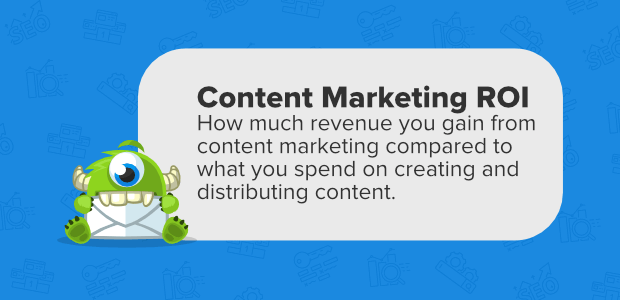


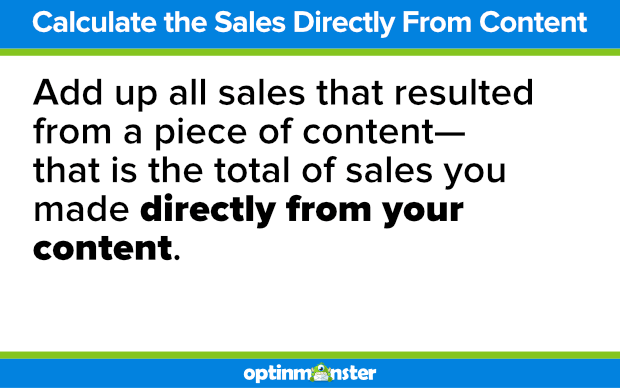



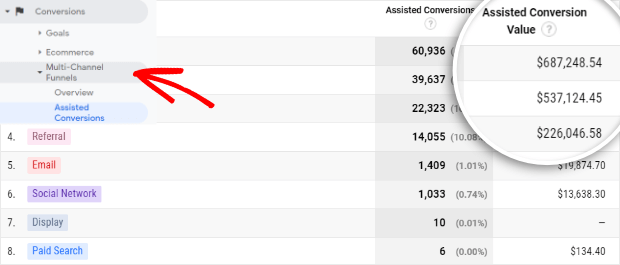


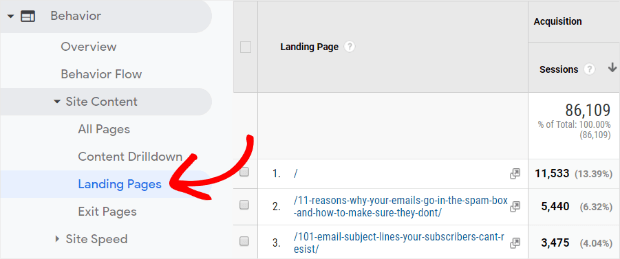
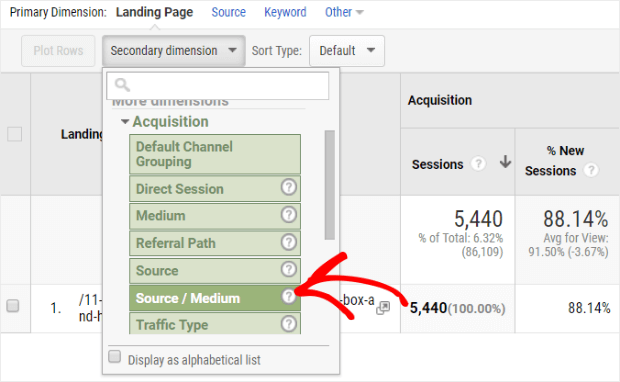




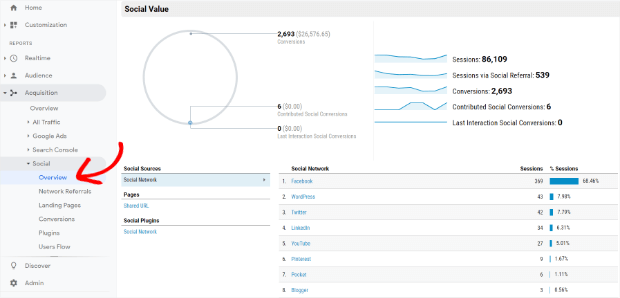




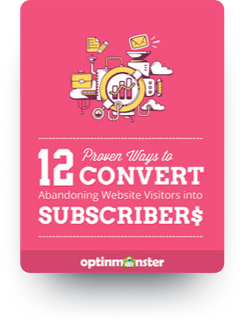







Add a Comment